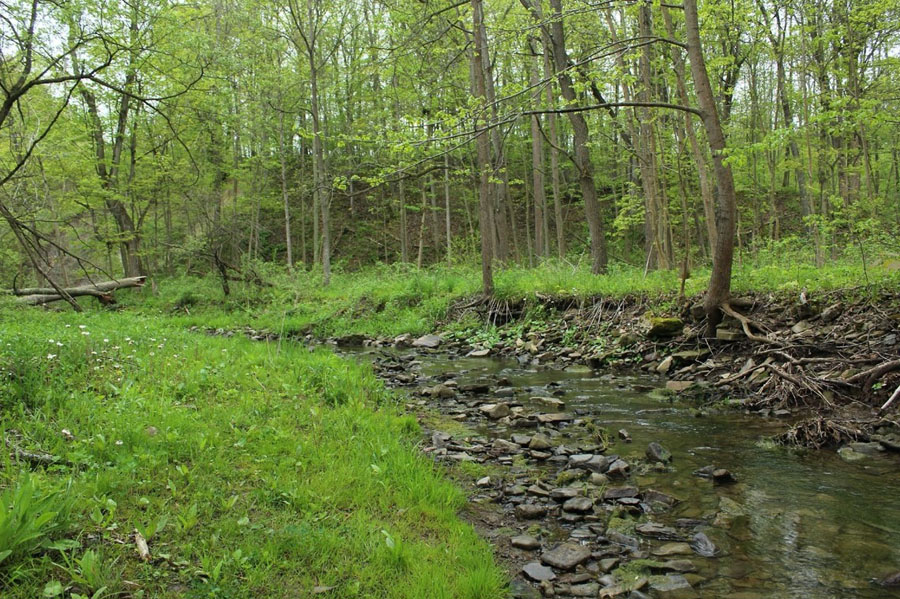Amidst the COVID-19 Pandemic, many people have been trying to ease their anxieties by immersing themselves in nature. The issue surrounding accessibility to green spaces has become more pressing, as those who live in urban centers within Southern Ontario have to travel long distances to visit natural landscapes. Many will travel to Northern Ontario parks to seek nature, but these parks are located hours away from large urban centers, creating an accessibility barrier between those for those who live in large cities, and without the mean to personal transportation.
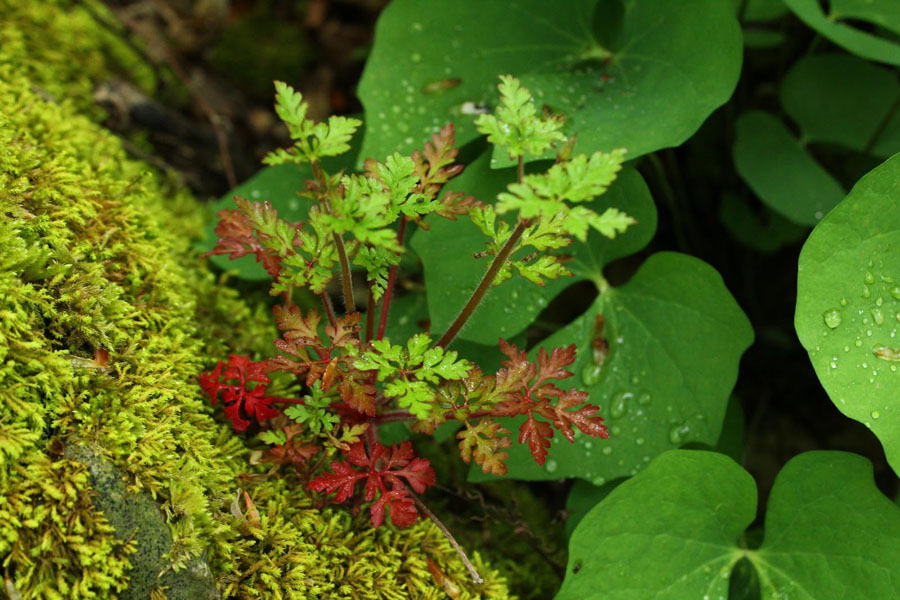
Moss-covered rocks with small native perennials are abundant throughout the park and add to the tranquility of the landscape.
One of the most significant areas of protected natural land within the Golden Horseshoe is Short Hills, Provincial Park. Located just 4 km southwest of St. Catharine’s, Ontario, Short Hills boasts 1600 acres of Carolinian ecosystems, waterfalls, streams, and native wildlife [3].
Although the park is home to a variety of rare native species, 50% of the park’s vegetation is comprised of exotic species that are not native to the region such as Garlic Mustard, Buckthorn and Japanese Slit Grass [2]. As the park is made up of post-agricultural land and is located closely a urban centers, the natural landscape is more vulnerable to inhabiting non-native species by way of wind pollination, animal droppings and the disruption of the ecosystem due to nearby development.
On many of the trails, you can see large pockets of native species when the park returns to life in mid to late spring. Native spring ephemerals like Trilliums, Jack-in-the-Pulpit, White Baneberry and Foam flower are just a few. These plants are a sign of warmer days in the summer ahead.
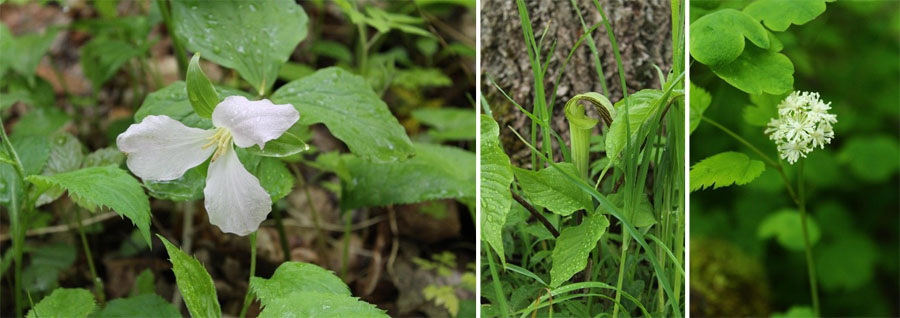
Left to Right: Ontario’s official flower – Trillium (Trillium grandiflorum), Jack-in-the-Pulpit (Arisaema triphyllum), and White Baneberry (Actaea pachypoda)
The park is also home to one of the last significant cold-water stream within the Niagara Peninsula. This stream system’s health profoundly influences the water quality downstream of Lake Ontario, which it flows into. Lake Ontario is an important reservoir that provides clean water for drinking, agriculture and recreational purposes [1]. Healthy streams, supported by vegetated barriers (i.e. Riparian boarder and Floodplains), are also an essential factor in helping to reduce flooding and erosion. The primary indicator of the excellent health within the 12 Mile Creek watershed is the cold-water fish species called Brook Trout. These species depend on cold, clean, clear, undisturbed water in order to thrive. The once abundant Brook Trout population has been significantly depleted in recent years, indicating poor stream health. One reason the stream’s health has deteriorated has been due to the removal of trees and shrubs from the stream banks. This has allowed for sunlight to warm the creek to temperatures where the Brook Trout are unable to survive and reproduce [1].
Short Hills has become a safe haven for the Brook Trout as various branches of the Twelve Mile Creek flow through the protected park land. This park serves as a precedent of how natural, uncultivated landscapes provide a healthy habitat for these fish species as well as other native species to thrive. There have been various initiatives to help recover the stream’s health in recent years, including stream restoration work completed by Trout Unlimited, Niagara Peninsula Conservation Authority, Niagara College and Ontario Trillium Foundation. Only a small portion of the Twelve Mile Creek watershed flows through Short Hills, leaving 80% of the watershed flowing through private land and the creek’s health in the hands of private landowners [1].
As our landscape continues to become more developed, it has also become more fragmented. This has various effects on the environment. As seen with the depletion of Brook Trout, development has led to a lack of vitality of land that can support the species. This issue of fragmentation has also caused an accessibility issue in which only those with the means of personal transportation can experience these natural reservoirs. In Niagara, the nearest local bus station to Short Hills is at the campus of Brock University. From there, one would have to pay for a driving service to the park, which is an additional 15-minute commute. Most park entrances will have cell phone reception, but there is no Wi-Fi access, so ensuring one has data or cell service is crucial to returning to the city again. Travelling from outside of the Niagara region, the nearest GO station is located at Fairview Mall in St. Catharine’s. From there, it is an additional 20-minute commute to Short Hills Park. If one does not have the means to access additional transportation costs besides public transit, it leaves a large gap between the people who can and cannot access nature. The rise of urbanization and the increasing fragmentation of natural land have begun to highlight accessibility issues within our cities, emphasizing the importance of ensuring that quality green space is planned for future developments and retrofit into our existing urban landscapes.
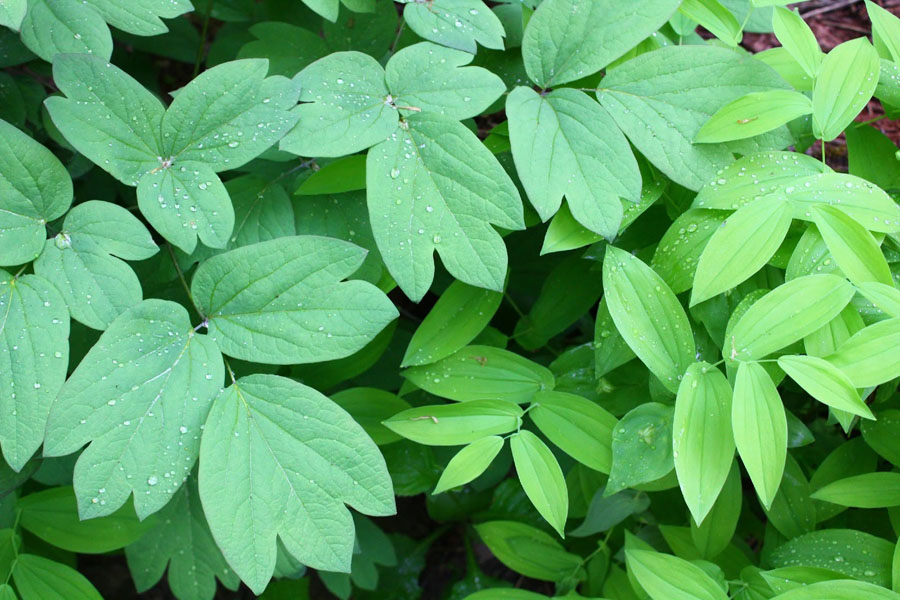
Blue Cohosh (Caulophyllum thalictroides) and False Soloman Seal (Maianthemum spp.) are some of the native species that are early to leaf out in the spring.
There seems to be a paradox that forms when we talk about preserving natural landscapes and making those landscapes available to those who seek it. These lands are fragile and depleted as they stand and need close monitoring of conservation specialists. Many amateur naturalists look beyond the technicalities of land preservation and native restoration, unaware of the lands status before visiting parks and conservation areas. How can natural landscapes be accessible to the masses, without compromising the status of our natural landscapes?
Anyone with a backyard or patio can bring a wilder and natural feel to their outdoor space through native species. This is also beneficial to native pollinators as well as helping to support local biodiversity. Landscape Designers and Landscape Architects can also implement a more ecological approach to their designs. Moving away from highly manicured areas and towards more casual and naturalistic designs. Education surrounding the importance of native and non-native species should be spread and more widely known. Lastly, mutual respect for our land, it’s native species and the lands history and ancestors that once inhabited it are all important factors to remember as we enter natural landscapes and take in its beauty.
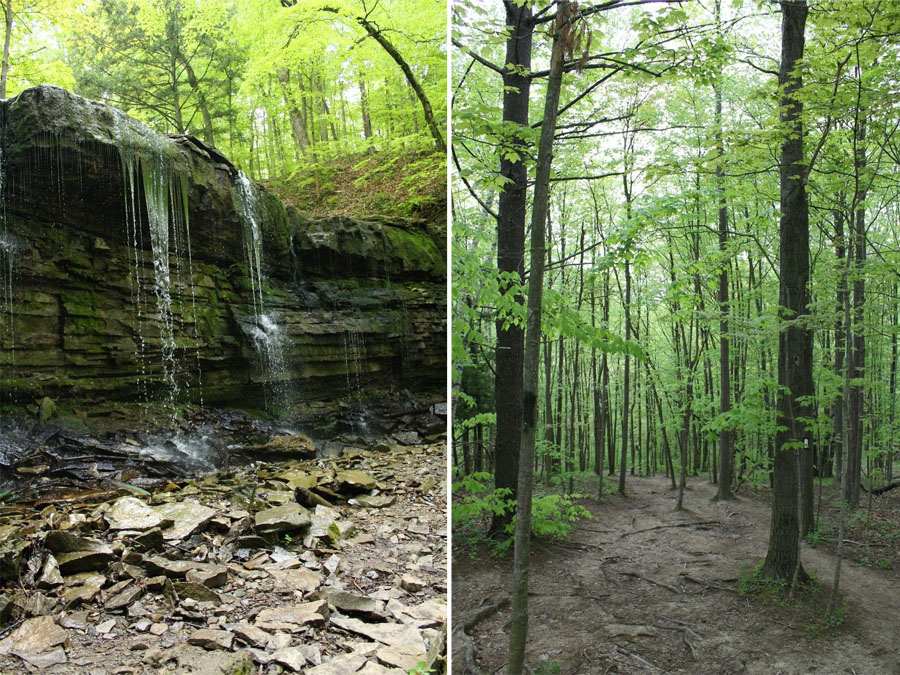
Left to Right: Terrace Falls off of the Terrace Creek Trail; Young mixed hardwood forest within the park.
Work Cited
[1] Healthy Twelve Mile Creek
[2] Friends of Short Hills
[3] Ontario Parks

